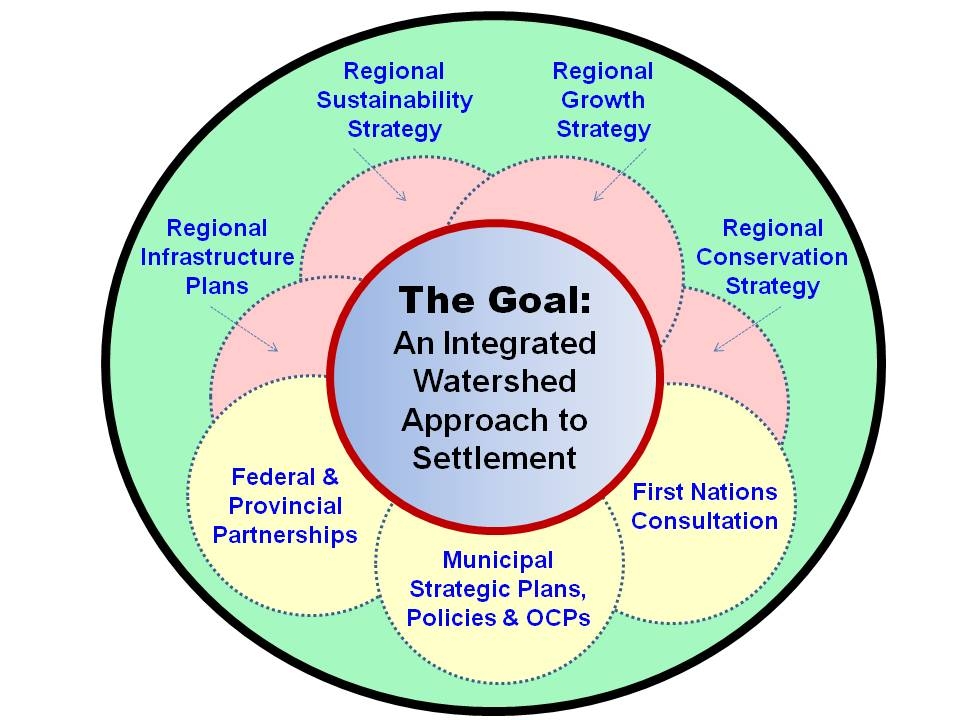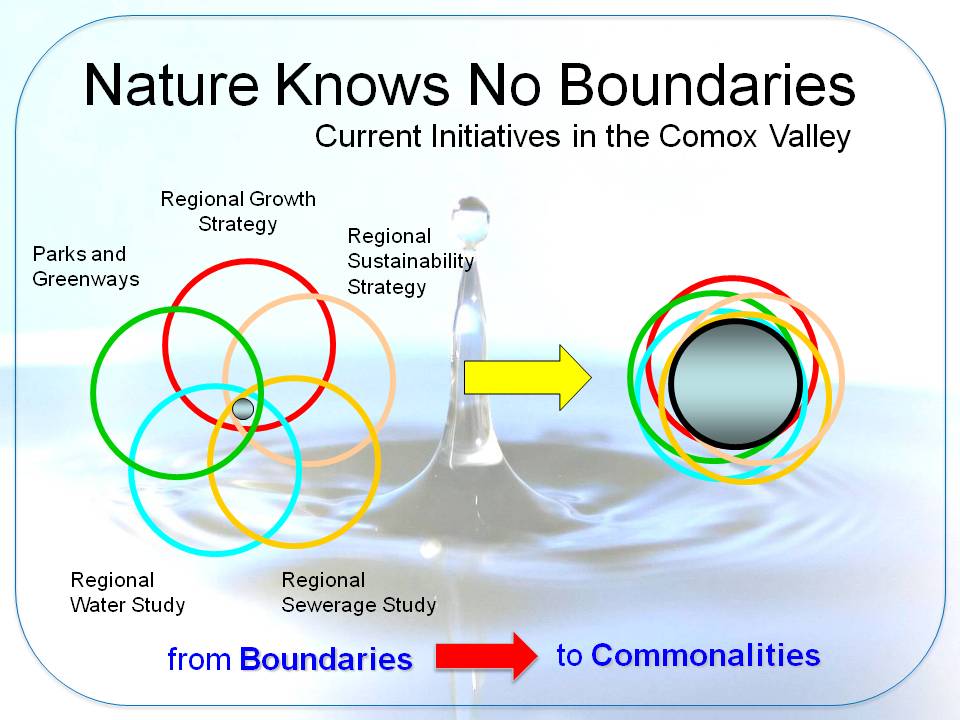GETTING AHEAD OF THE WAVE: 2009 Comox Valley Learning Lunch Series drew attention to the vision for “An Integrated Watershed Approach to Settlement Change in the Comox Valley”

Bottom-Up Approach
 The vision for An Integrated Watershed Approach to Settlement Change was an early outcome during the planning and curriculum development for the 2009 Comox Valley Learning Lunch Seminar Series.
The vision for An Integrated Watershed Approach to Settlement Change was an early outcome during the planning and curriculum development for the 2009 Comox Valley Learning Lunch Seminar Series.
“To be successful, we all need to work outside our normal boundaries; and we need to proactively communicate and work with others,” states Derek Richmond, Manager of Engineering with the City of Courtenay . “We need to think of ourselves as a team, not as individuals within silos; getting there means we will have to break down boundaries through communication, collaboration, cooperation and coordination.”

Call for a Paradigm-Shift
“The Learning Lunch Series provides a beginning and expertise around an issue. This starts the conversation and generates the energy and passion,” observes Tim Pringle, Director of Special Programs for the Real Estate Foundation. “After that, it really is a matter of connecting the dots to create collaboration.”
“The challenge for Comox Valley practitioners is to work around and with boundaries,” adds Derek Richmond. “Through the 2009 Series, we would like to shift the paradigm from boundaries to areas of commonality.”

From Boundaries to Areas of Commonality
“In the Comox Valley we have talked the talk and now it is time to do the walking. ‘The converted’ are saying, show us the way and we will follow,” continues Derek Richmond.
“We are now (or we should be) at the ‘process’ stage of this initiative. The next step is to define a process at the ground level that is easily understood by all parties.”
Rising to the Challenge
“The immediate challenge in the Comox Valley is to articulate an example (of how a review / planning / approval situation is dealt with / processed), and have the Regional District players respond to the scenario of WHO is involved in the process, WHAT they do, and HOW, WHY and WHEN they do it.”
“Part of the exercise also involves who their counterparts are in the adjoining municipalities, and have them similarly articulate: the expected / anticipated interaction between the various parties; what the expected outcomes and benefits are, and how a process might be monitored and documented to achieve consistent results.”
Road Map for Implementation
“The missing element is the mandate. Having recognized the need for legislative tools, a challenge is to draw attention to the need for ‘formal’ commitment from all levels of government and follow through by developing an action plan to focus attention on implementing legislation.”
“At the local level we need to (have staff) develop a working agreement for the 4 C’s as they apply to a review, monitoring and implementation process – one that includes the principles of all of the key initiatives, but emphasizes integrated planning on a watershed basis.”
“It is important that we state our vision and provide a road map for implementation. Opportunities do not come without challenges and progress is not made without taking risks,” concludes Derek Richmond.
Comox Valley Regional Conservation Strategy
 The Comox Valley Regional Conservation Strategy is a long-term approach to use and conservation of land, and was initiated by the Comox Valley Land Trust.
The Comox Valley Regional Conservation Strategy is a long-term approach to use and conservation of land, and was initiated by the Comox Valley Land Trust.
“The strategy aims to provide reliable and accessible conservation information to politicians, planners, developers, community groupd and residents, and to assist in wise and informed land use decisions,” states Jack Minard, Executive Director.
To Learn More:
To read a story that connects the dots between An Integrated Approach to Settlement Change, the Comox Valley Regional Conservation Strategy and the ‘regional team approach’, click here. This set the stage for a ‘call to courage’ by Derek Richmond and Jack Minard at Seminar #1.


